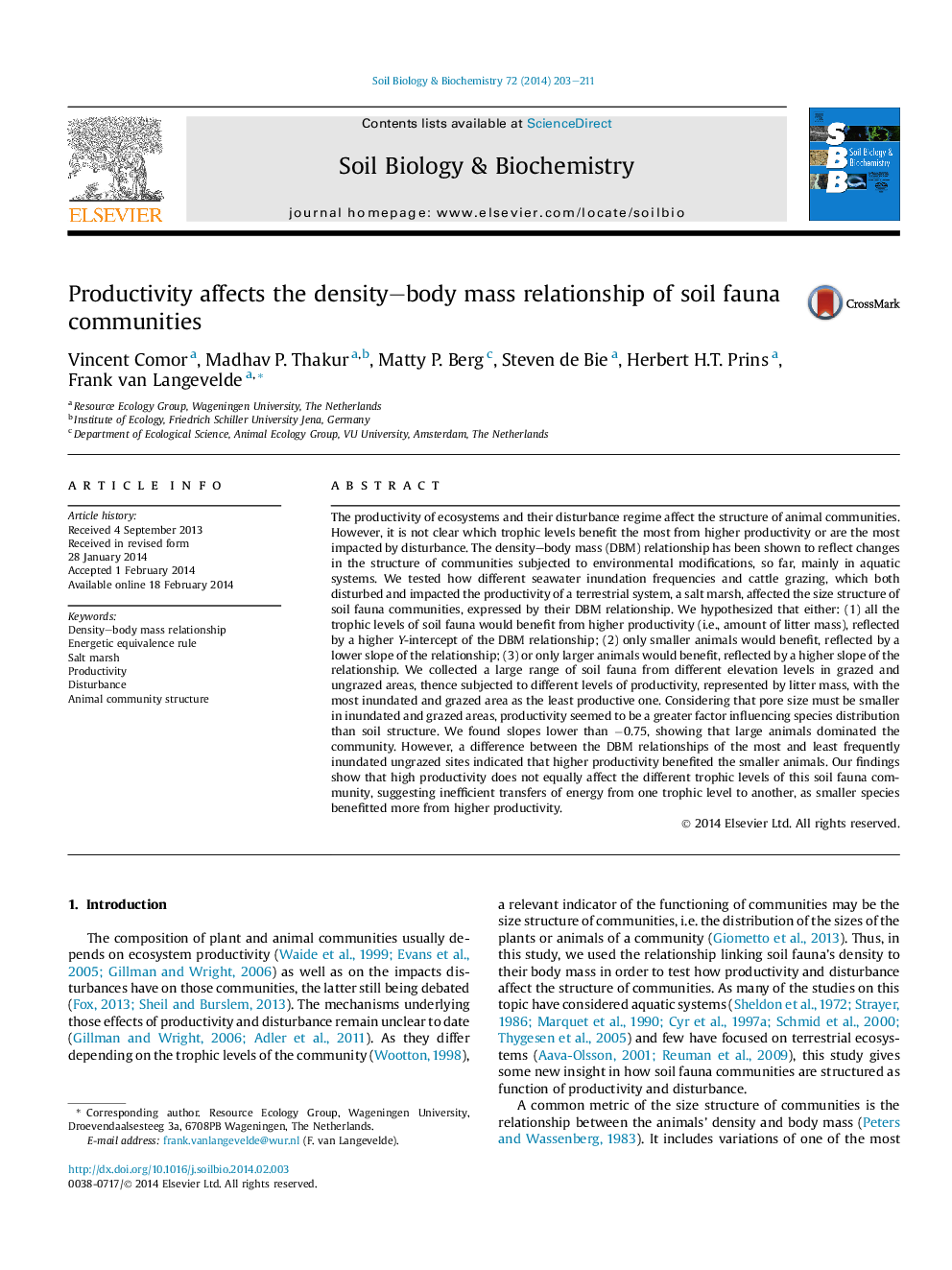| Article ID | Journal | Published Year | Pages | File Type |
|---|---|---|---|---|
| 8364930 | Soil Biology and Biochemistry | 2014 | 9 Pages |
Abstract
The productivity of ecosystems and their disturbance regime affect the structure of animal communities. However, it is not clear which trophic levels benefit the most from higher productivity or are the most impacted by disturbance. The density-body mass (DBM) relationship has been shown to reflect changes in the structure of communities subjected to environmental modifications, so far, mainly in aquatic systems. We tested how different seawater inundation frequencies and cattle grazing, which both disturbed and impacted the productivity of a terrestrial system, a salt marsh, affected the size structure of soil fauna communities, expressed by their DBM relationship. We hypothesized that either: (1) all the trophic levels of soil fauna would benefit from higher productivity (i.e., amount of litter mass), reflected by a higher Y-intercept of the DBM relationship; (2) only smaller animals would benefit, reflected by a lower slope of the relationship; (3) or only larger animals would benefit, reflected by a higher slope of the relationship. We collected a large range of soil fauna from different elevation levels in grazed and ungrazed areas, thence subjected to different levels of productivity, represented by litter mass, with the most inundated and grazed area as the least productive one. Considering that pore size must be smaller in inundated and grazed areas, productivity seemed to be a greater factor influencing species distribution than soil structure. We found slopes lower than â0.75, showing that large animals dominated the community. However, a difference between the DBM relationships of the most and least frequently inundated ungrazed sites indicated that higher productivity benefited the smaller animals. Our findings show that high productivity does not equally affect the different trophic levels of this soil fauna community, suggesting inefficient transfers of energy from one trophic level to another, as smaller species benefitted more from higher productivity.
Keywords
Related Topics
Life Sciences
Agricultural and Biological Sciences
Soil Science
Authors
Vincent Comor, Madhav P. Thakur, Matty P. Berg, Steven de Bie, Herbert H.T. Prins, Frank van Langevelde,
